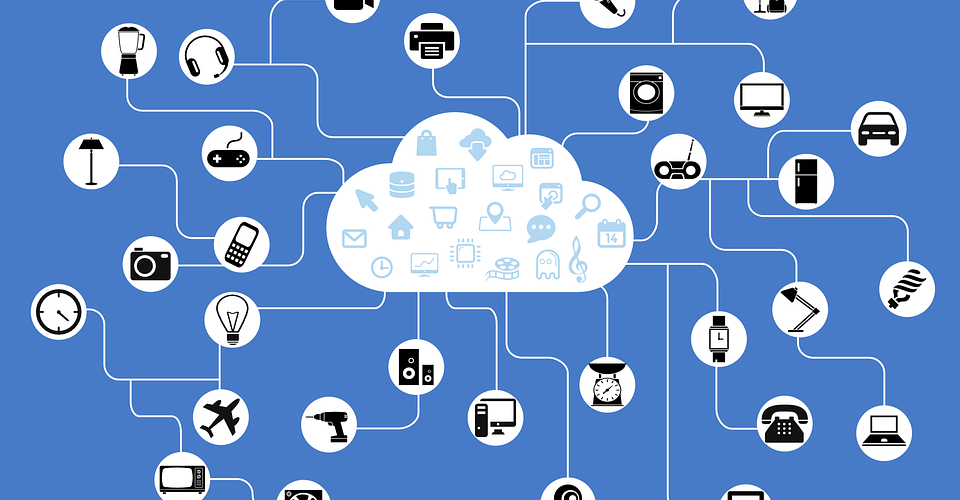What Is IoT? Everything You Need to Know About the Internet of Things
The world is more connected now than it ever was. It used to be that you’d access the internet through your smartphone or computer, but now everything from your toothbrush to your microwave seems to be able to get online.
Connected gadgets are just part of a global shift in the way objects, people, and beings are and can be connected. This phenomenon is known as the Internet of Things or IoT for short. But what is IoT? Why is it important? What kind of impact does it have on our daily lives? Read on to find out the answers to all of these questions and much more about the most significant breakthrough in global communication since the World Wide Web.
What is IoT?
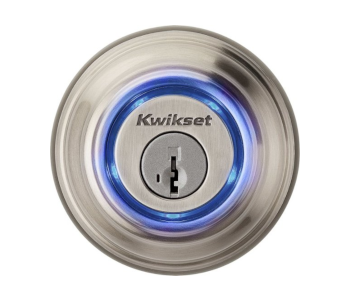
We’re all familiar with computers, smartphones, and tablets; devices which connect to the internet and allow us to send or receive information. The same idea is at the core of the Internet of Things as well, but there are two main differences. The first is its vastly broader scope and the notion that any object or living being has the potential to be a Thing. The second is that the interaction which takes place over the internet doesn’t need human input, i.e., it is fully automated. In short, IoT refers to an increasing number of Things which are connected to the internet and share information on their own.
There are three types of IoT devices. The first are ones that collect and transmit information. A motion sensor in your smart home security system is one such device – it sends motion alerts to the system but can’t act on them. The second type of IoT device is one which acts on information collected from the internet. For example, an irrigation network can receive local weather reports and regulate how much water is needed to optimize crop growth & reduce costs. The final device type is one that can both receive and transmit information. Smart locks are an excellent example as they can receive footage from a security camera and open the door for an approved person or send an alert to your phone informing you of the visitor.
What is the history of IoT?
The idea of connecting two things in order to exchange and act on information has existed far longer than IoT or ordinary internet for that matter. The telegraph and telephone were precursor technologies that paved the way to the adoption of the internet at the end of the 20th century, which in turn made commercial devices built on IoT principles a reality at the beginning of the 2010s.
The earliest example of an IoT device stems from 1980. Researchers at the Carnegie Melon University developed a soft drink vending machine that was connected to the college’s network. You could access the machine from a terminal and see if drinks were available and cold without having to physically go and check. A toaster developed by John Romkey in 1990 was another prophetic example. The toaster could connect to the internet and be turned on or off remotely through a command issued from a connected computer.
IoT had a ways to go though and was facing three major problems. The first was affordability – the chips that did the communicating would have to be cheap and easy to mass produce for IoT to make sense. Second, there was no reliable way to establish a connection – widespread internet was in its infancy in the 90s while technologies like Wi-Fi and Bluetooth didn’t see practical application until the turn of the century. Lastly, early internet protocols could support a limited number of unique IP addresses.
The IP address problem was solved first with the creation of IPV6. This internet protocol allows for more IP addresses than the Earth could possibly ever need, so assigning a unique one to billions or even trillions of devices became trivial. Then came improvements in wireless communication, which significantly increased bandwidth and viability. Miniaturization in microchip manufacturing has advanced dramatically as well and means that we can produce simple chips in large quantities for little cost, making IoT not just feasible, but a reality.
How does IoT affect consumers?
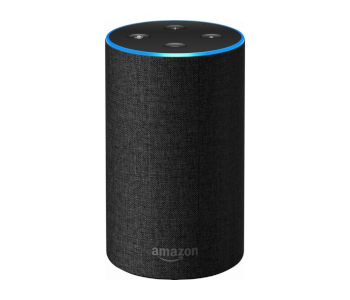
The smart home is where most ordinary consumers get their first taste of IoT in action. Smart speakers are the perfect gateway into the world of IoT as they’re inexpensive, anyone can start using them quickly, and they function as a basis you can build upon. Amazon’s Echo, the Google Home, and Apple’s HomePod are the most popular smart speakers. They access the internet to give you news updates or an inexhaustible library of music. Smart speakers also facilitate home automation either through voice commands or by acting as a hub used to set up a series of events known as scenes. These are set in motion either via external input or one smart gadget’s actions that trigger others.
Smart speakers are just the beginning, though. There are dozens of smart plugs, security cameras, sensors, light bulbs, and other devices that interconnect and can completely automate your morning routine or movie night experience, just to name a few possibilities. Superficially, the adoption of IoT devices into your home sounds like a hobby for tech enthusiasts with lots of disposable income, but many smart devices have practical applications that elevate them from novelties to potential lifesavers.
Assistance with independent living is among the most persuasive reasons to embrace IoT. Devices like smart light bulbs that turn on at preset times or doorbell cameras which let you see and communicate with visitors from anywhere in the house are indispensable for elderly and impaired people.
You might not hear the beeping of a smart smoke alarm, but its internet connection ensures your phone will get a notification anywhere in the world. Concerned parents can rely on smart baby monitors to check up on their children while at work, while anyone can protect their property with smart security cameras that alert you to suspicious movements or contact your security company.
IoT devices might seem expensive, but many of them have the potential to pay for themselves over time by saving you money. Smart plugs ensure that appliances or lights aren’t on before a specified time. Smart thermostats, air conditioners, and water heaters are even more energy-efficient. They collect data on your habits and can figure out optimum heating or cooling schedules that minimize spent energy without impacting comfort.
Wearables are the next big expansion opportunity for IoT in our daily lives. The main draw of wearables is their ability to gather and transmit information on your vital statistics like temperature, heart rate, or blood pressure. Smartwatches are the most sophisticated wearables and offer features you’d expect from a smartphone or computer like an operating system or the ability to send and receive files. While wearables are still a new technology, they’re already helping and motivating us to live healthier lives, and their impact is sure to grow as the technology matures.
What is the impact of IoT on industry?
IoT is at the heart of the fourth industrial revolution. Factories designed with industry 4.0 principles focus on interconnectedness, transparency of information, and cyber-production systems. These smart factories communicate internally, with people in decision-making roles, and with other participants in the supply chain.
Factories based on IoT achieve efficiency levels that weren’t possible before by prioritizing information transfer and minimizing human input. Let’s take a machine on a production line as an example. In a smart factory, that machine is connected to other devices in the production process as well as sensors that monitor both it and the line. Information gathered from the machine and sensors provides data on its efficiency. In the long term, it can be used to predict malfunctions or establish a pattern that will help the factory’s decision-making system improve efficiency.
A factory that’s automated in this way is more autonomous than ever before since decisions are made autonomously by each component of its decentralized command system. Humans aren’t out of the equation yet though – they can still make command decisions and react to emergency situations the factory’s virtual intelligence isn’t smart enough to deal with. Component interconnectedness and information transparency ensures that relevant data is aggregated and presented to humans in a way that’s easy to grasp and act on.
In short, IoT greatly increases industry efficiency, reduces costs, and requires fewer people to operate. On the other hand, the humans who are still needed to run a smart factory are better informed and less likely to do physically demanding or unsafe work.
Does IoT affect other parts of our lives?
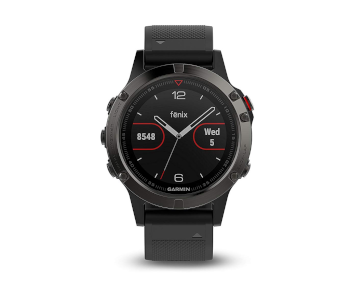
Yes, it does, often times without us even realizing it. A good example of this is agriculture. Farmers who use IoT know more about the condition of their stock and crops. Connected sensors help them improve conditions in the fields, account for weather changes, and predict yields better. The farmer can then make informed decisions that result in lower production costs as well as food that’s both high-quality and delivered to your local supermarket as efficiently as possible.
IoT in business leads to improved efficiency and better customer satisfaction. Adopting IoT drastically enhances inventory management and reduces overhead. This means that a company can anticipate how much product it needs and plan its logistics accordingly while operating at lower costs.
Positive customer experience is a cornerstone of any successful business. IoT helps improve it by analyzing user trends and attitudes to help companies create more user-friendly and personalized products. Finally, widespread adoption of IoT causes increasing investments in the technology’s development, which leads to the creation of jobs and new business lines.
IoT is becoming more prevalent in medicine too. For instance, patients can do tests and leave samples at one hospital, and the results of these tests are automatically transferred to physicians at another location. This, along with long-distance examinations, means patients living in remote areas can get world-class healthcare. Then there are gadgets like smart scales or insulin monitors which can help you create a meal plan based on weight loss goals or remind you to check your glucose levels.
Is IoT safe?
Security risks pose the greatest challenge to IoT’s acceptance and evolution. There are no strict security standards IoT device manufacturers need to follow, so exploits and successful hacking attempts are a reality. Some manufacturers go out of their way to ensure that their devices connect to the internet securely while others neglect even something as basic as data encryption.
There are numerous documented cases of conversations smart speakers recorded without consent, hackers gaining access to and even communicating through webcams and security cameras, or location data being leaked. Then there’s the problem of planned obsolescence – manufacturers offer support and updates for their IoT products for as little as 3 years. These same products could work longer but may not be safe to use anymore because hackers can find and exploit weaknesses that aren’t patched anymore.
Privacy is another major concern when it comes to IoT security. Data gathering is at IoT’s core, and the more data is collected on you, the easier it is to reconstruct your personality, preferences, etc. A company you bought an IoT device from could know your location, what kind of media you enjoy, or even what your daily routines are. While this data is useful in developing improvements to the products you use, it could also be sold and used for more nefarious purposes.
Can you use IoT devices and stay protected?
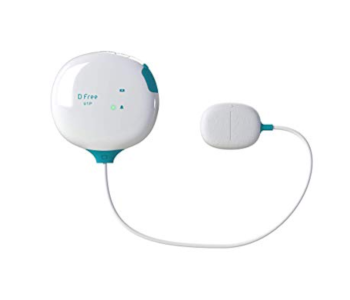
The above section paints a grim picture of IoT security, but you can do much to offset the dangers and enjoy the advantages IoT brings. The first step is to make sure your network is secure. That means keeping your router’s firmware up to date, having a strong Wi-Fi password, and using a VPN for secure data transfers.
You can limit access to your Wi-Fi by making it undiscoverable so that it doesn’t show up in a list of nearby hotspots. It’s also a good idea to set up a guest network and connect your IoT devices to it. That way your main network won’t be affected if a device connected to the guest network is compromised.
Awareness and forethought are crucial to selecting a dependable IoT device. Read reviews of devices that interest you before buying and check out what other users have to say. Many smart device apps are available for free for iOS and Android. Install a device’s app before purchasing it to see how intrusive its requirements are and avoid security risks before they can affect you.
What’s in store for IoT?
IoT has been around commercially since the start of the decade and is steadily gaining momentum. Gartner, a leading tech research company, estimates that there will be more than 20 billion connected devices by 2020. Consumer devices make up the majority of this total, but IoT devices with industry application are gaining traction too. Consumers and businesses alike spend billions of dollars on IoT devices annually. Estimates predict that $3 trillion will be spent on IoT next year.
The Internet of Things has a bright future, and it is impossible to predict the extent to which it will have an impact on our lives, health, and society in general. For example, ambitious plans involve the use of IoT in upgrading city infrastructure where thousands of sensors will help optimize the flow of traffic, cut down on lighting costs, and redefine how we experience the city through augmented reality.
The office of tomorrow will have customizable lights and beverage dispensers that anticipate when you might need a pick-me-up, boosting productivity and comfort. Virtual assistants powered by artificial intelligence will transform our customer experiences and make workplaces like call centers obsolete.
Visions of the future that seemed like science fiction a decade ago are now only a few years away, and we have IoT to thank for it.

